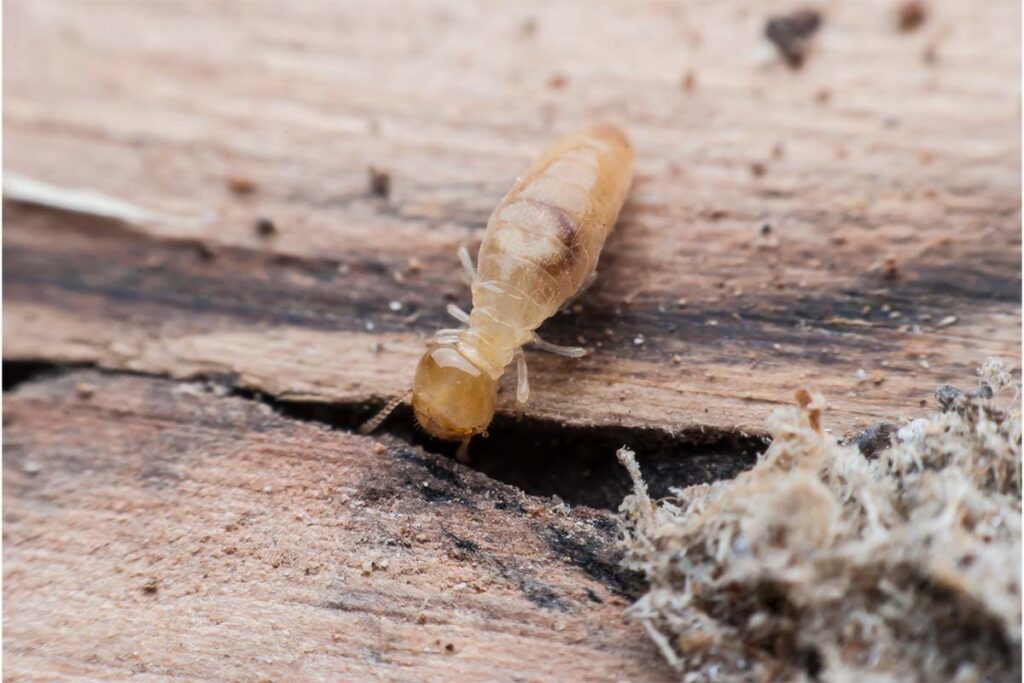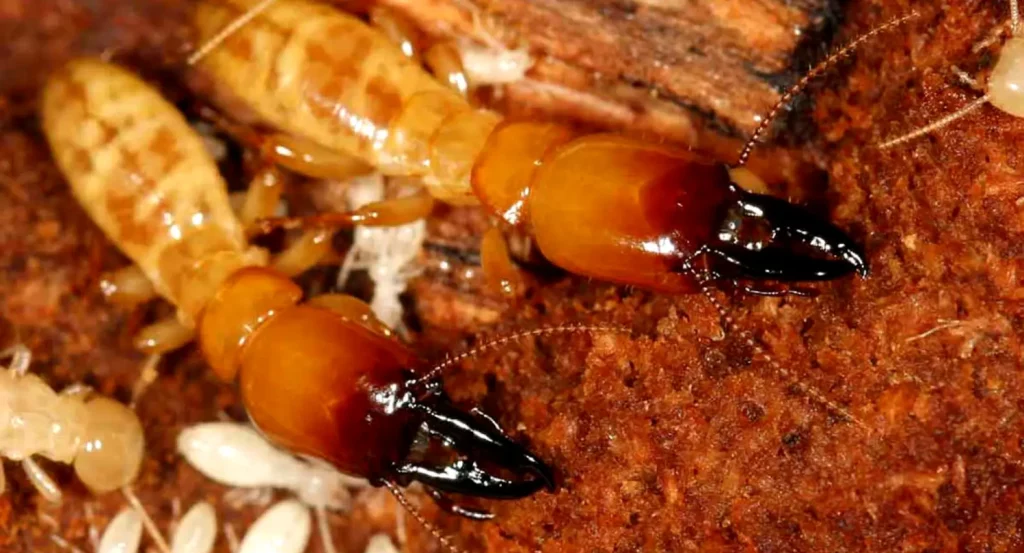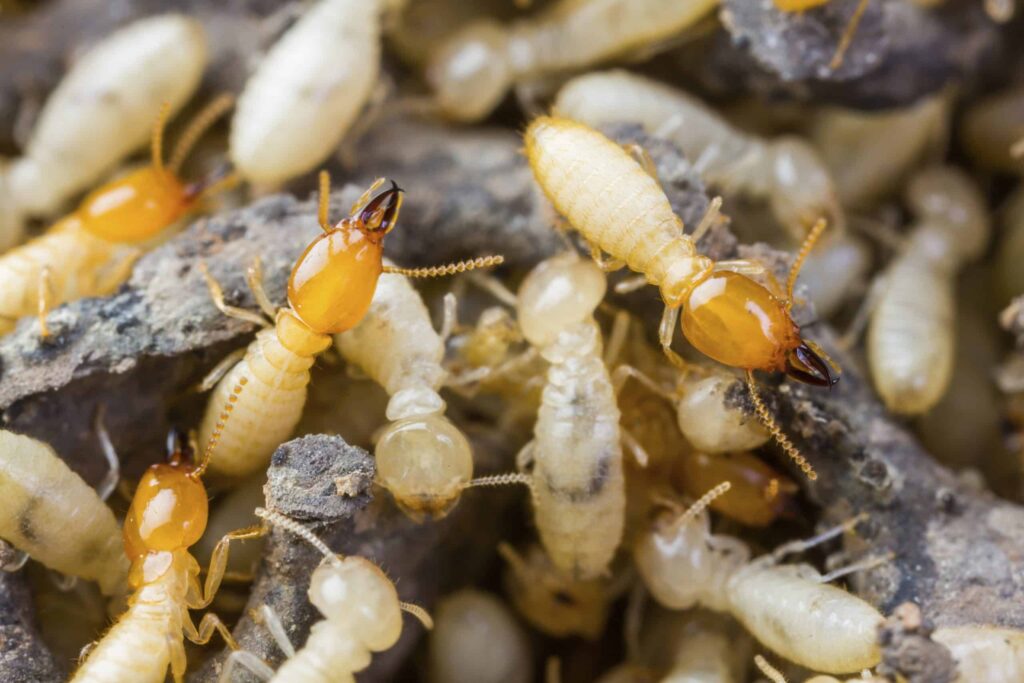Why is Termite Control Crucial in Sydney’s Climate?
Termite control Sydney residents need isn’t optional—it’s essential protection against silent destroyers thriving in the region’s warm, humid conditions. Sydney’s climate creates the perfect breeding ground for termites, offering consistent moisture and temperatures that allow colonies to remain active year-round.
Professional termite treatment sydney becomes critical when you consider the financial stakes. Most homeowner insurance policies explicitly exclude termite damage from coverage, leaving property owners to shoulder repair costs that frequently exceed $10,000. Hidden infestations can progress for months or years before visible signs appear, multiplying the destruction exponentially.
The threat extends far beyond surface-level annoyance. Termites systematically compromise your property’s structural integrity by consuming wooden beams, floor joists, and wall frames from the inside out. A single colony containing millions of workers can devour several kilograms of wood daily, turning load-bearing structures into hollow shells that risk catastrophic failure.
Early detection through professional intervention offers the only reliable defense. Trained technicians identify warning signs invisible to untrained eyes, using specialized equipment to detect termite activity behind walls and beneath floors. The window between initial infestation and severe structural compromise narrows quickly in Sydney’s termite-friendly environment, making prompt action the difference between minor treatment and major reconstruction.
Why Are Termites So Common in Sydney?
Sydney’s warm and humid weather creates the perfect conditions for termites to breed all year round. The average temperatures in the area, which range from 18-26°C, along with the moisture levels from the coast, create an ideal environment for termite colonies to thrive and multiply quickly.

The Most Destructive Termite Species in Sydney
There are three main types of termites in Sydney that can cause significant damage:
- Coptotermes acinaciformis: This is the most destructive termite species in Australia. They build large underground colonies with millions of workers. These termites are aggressive feeders and can eat through wood at an alarming rate, causing severe damage to structures within months of setting up a nest near your property.
- Schedorhinotermes intermedius: This species creates smaller colonies that are still capable of causing significant damage. They typically nest in tree stumps or underneath buildings and attack both hardwood and softwood, making no structure safe from their hunger.
- Nasutitermes exitiosus: These termites build mound nests in gardens and under homes. While they are slightly less aggressive than Coptotermes, they still pose a serious threat to wooden structures, fences, and landscaping timber.
How Do Termites Spread?
These termite species create complex networks of colonies that can extend up to 50 meters from their main nest. A single mature colony can house anywhere between 100,000 to several million termites, all working tirelessly to gather cellulose materials (their food source). The combination of Sydney’s climate and these prolific breeders means that properties are constantly at risk of potential infestations.
It’s important to note that these colonies have the ability to consume entire structural beams before homeowners even notice any visible damage. This makes it crucial for property owners in Sydney to be proactive in protecting their homes from termite infestations.
7 Signs You Might Have a Termite Infestation
As a homeowner in Sydney, it’s crucial to be aware of the signs of a potential termite infestation. Catching these pests early can save you from costly repairs down the line. Here are seven key indicators to look out for:
1. Drooping or Buckling Wood
If you notice any wooden structures in your home, such as beams or door frames, appearing warped or weakened, it could be a sign of active termite feeding. Keep an eye out for paint bubbling or peeling away from these areas as well.
2. Hollow-Sounding Wood
Tap on wooden surfaces throughout your home and listen closely. If you hear a hollow sound, it’s likely that termites have consumed the interior while leaving a thin layer intact. This technique is particularly effective on skirting boards and window frames.
3. Mud Tubes
Look for pencil-width tunnels running vertically along walls, foundations, or concrete surfaces. These are mud tubes made by subterranean termites as they travel between their soil nests and food sources. When broken, these tubes will feel brittle to the touch.
4. Discarded Wings
Check near windowsills or doors for piles of translucent wings. This indicates that swarming termites have established a new colony nearby. Reproductive termites shed these wings after their mating flight, leaving them behind in clusters.
5. Frass (Termite Droppings)
Keep an eye out for small, pellet-like droppings accumulating near wooden structures. This frass resembles sawdust or coffee grounds and is a sign of drywood termite activity. These pests push their waste materials through tiny holes in infested wood.
6. Blistered Paint
If you notice any areas where the paint on your walls or ceilings appears blistered or bubbled, it could be due to moisture damage caused by termites tunneling through the underlying timber.
7. Sagging Floors or Ceilings
Pay attention to any floors or ceilings that seem to sag or dip unexpectedly. This may indicate structural damage caused by termite activity within the supporting timbers.
Remember, if you suspect a termite infestation based on these signs, it’s important to take action quickly! Contact a professional pest control service who can assess the situation and provide appropriate treatment options tailored specifically for your home.
Why Should Homeowners in Sydney Rely on Professional Termite Inspections?
Professional termite inspection Sydney services detect hidden infestations before they cause catastrophic structural damage. Annual inspections catch termite activity in its earliest stages, when treatment costs remain minimal and damage hasn’t compromised your property’s integrity.
Trained technicians deploy advanced termite detection tools that reveal what naked eyes miss:
- Thermal imaging cameras identify temperature variations behind walls where termites generate heat.
- Moisture meters pinpoint elevated humidity levels that signal active colonies.
- Termatrac devices use radar technology to detect termite movement inside timber without drilling.
- Borescopes allow inspectors to examine wall cavities and roof voids through tiny access points.
The typical inspection spans 1-2 hours, depending on property size and accessibility. Inspectors examine subfloors, roof spaces, external perimeters, and high-risk zones where timber contacts soil. They probe vulnerable areas like door frames, window sills, and skirting boards.
Sydney homeowners receive comprehensive reports documenting every finding with photographic evidence. These detailed assessments map termite activity locations, identify species present, evaluate damage severity, and recommend targeted treatment strategies. The documentation proves invaluable for insurance claims and property transactions.
Annual termite checks establish baseline conditions for your property, making it easier to spot new activity during subsequent visits. This proactive approach protects your investment far more effectively than waiting for visible damage to appear.
How Do Professionals Treat Termite Infestations Effectively?
Professional termite treatment options in Sydney combine multiple strategies to eliminate active infestations and prevent future attacks. Licensed pest controllers assess each property’s unique situation before recommending the most effective approach.
1. Chemical Soil Treatments
Chemical soil treatments form the primary defense line, creating a continuous protective barrier around your property’s perimeter. Technicians inject liquid termiticides into the soil at strategic intervals, typically every 300mm, reaching depths where termites travel. This barrier remains effective for 5-8 years, killing termites on contact as they attempt to enter your home.
2. Direct Chemical Applications
Direct chemical applications target infested wood areas when colonies have already established themselves inside structural timbers. Professionals drill small holes into affected wood and inject concentrated termiticides, eliminating termites feeding within. This method works particularly well for localized infestations in wall cavities, roof spaces, or timber framing.
3. Baiting Systems
Baiting systems offer an alternative approach that eliminates entire colonies at their source. Technicians install monitoring stations around your property containing cellulose material that attracts foraging termites. Once activity is detected, the bait is replaced with slow-acting toxicants that workers carry back to the colony, eventually destroying the queen and entire population. This process requires ongoing monitoring every 6-8 weeks.
4. Pre-Construction Treatments
Pre-construction treatments provide the strongest protection for new builds and major renovations. These combine physical barriers—stainless steel mesh or graded stone particles—with chemical soil treatments applied before concrete slabs are poured, creating impenetrable defenses from the ground up.
What Preventive Measures Can Homeowners Take to Reduce Termite Risk?
Termite prevention Sydney strategies focus on eliminating conditions that attract these pests to your property. Simple environmental modifications create hostile conditions for termite colonies while protecting your home’s structural elements.
1. Reduce Wood-to-Soil Contact
Reducing wood-to-soil contact ranks as the most critical prevention step. Remove any timber, firewood, or wooden debris stored directly against your home’s exterior walls. Maintain a minimum 30-centimeter gap between soil and any wooden components of your structure, including weatherboards, door frames, and deck posts.
2. Modify Mulch and Landscaping Materials
Bark mulch and woodchips near foundations provide ideal food sources and moisture retention for termite colonies. Replace these materials with alternatives like gravel, pebbles, or rubber mulch within a two-meter radius of your home’s perimeter.
3. Ensure Proper Ventilation
Proper ventilation prevents the moisture buildup that attracts termites to subfloor areas and roof cavities. Install adequate vents in crawl spaces and ensure existing vents remain unobstructed by vegetation or stored items.
4. Seal Entry Points
Sealing entry points blocks termite access routes into your home. Inspect your property regularly for:
- Cracks in concrete foundations or brick mortar
- Gaps around plumbing pipes and utility lines
- Openings where walls meet the roof line
- Damaged weather stripping on doors and windows
Fill these vulnerabilities with appropriate sealants or expanding foam designed for exterior use.
5. Use Termite-Resistant Building Materials
Termite-resistant building materials like treated pine, steel framing, or concrete alternatives provide long-term protection during renovations or new construction projects.
Can DIY Methods Replace Professional Termite Treatment?
No, DIY termite control methods cannot substitute professional treatment when an active infestation exists. While homeowners can implement certain preventive measures, these approaches lack the effectiveness and comprehensive coverage needed to eliminate established colonies.
Popular DIY Approaches and Their Limitations
Common DIY termite control methods include:
- Diatomaceous earth application: Sprinkling this powder around potential entry points may desiccate individual termites on contact, but it doesn’t reach hidden colonies or penetrate deep into wood structures
- Essential oils against termites: Applying tea tree oil or lavender oil around doorframes and foundation cracks might deter some termites temporarily, yet these natural repellents evaporate quickly and provide no lasting protection
- Vinegar sprays and borax solutions: These household remedies only affect surface-level termites without addressing the root colony problem

Why Professional Intervention Remains Essential
The limitations of DIY treatments become apparent when considering termite biology. A single colony contains hundreds of thousands to millions of termites, with the queen producing thousands of eggs daily. Surface treatments simply cannot reach the colony’s core or eliminate the reproductive centre.
Professional pest control specialists use targeted chemical barriers, advanced baiting systems, and detection equipment that identify hidden infestations behind walls, under floors, and within structural timbers—areas completely inaccessible to DIY methods. When you notice any signs from Termite Control Sydney: 7 Signs You Need Professional Treatment Now, immediate expert assessment prevents structural damage that costs tens of thousands in repairs.
Conclusion
Sydney’s warm, humid climate creates the perfect environment for termites to thrive year-round. The seven warning signs outlined in this guide—from hollow-sounding timber to mud tubes and frass—serve as your first line of defense against structural devastation.
Early termite detection benefits extend far beyond immediate cost savings. Acting on these warning signs promptly can mean the difference between a manageable treatment and tens of thousands in structural repairs. Most insurance policies won’t cover termite damage, placing the financial burden squarely on property owners.
Protecting Sydney homes from termites requires vigilance and professional expertise. If you’ve noticed any of these seven signs, contact a licensed pest control specialist immediately. Annual inspections remain your most reliable safeguard, detecting hidden colonies before they compromise your property’s structural integrity.
Don’t wait for visible damage to escalate. Schedule your professional termite inspection today and secure your most valuable investment against these silent destroyers.
Related : How to Choose a Pest and Termite Treatment Plan That Actually Works

